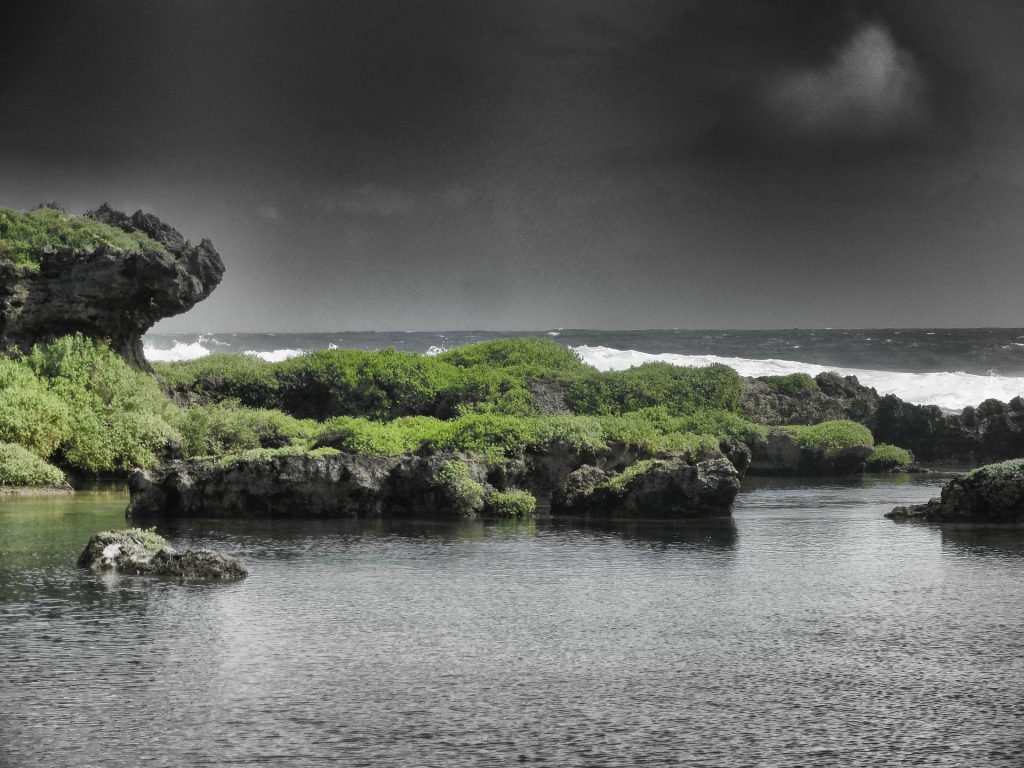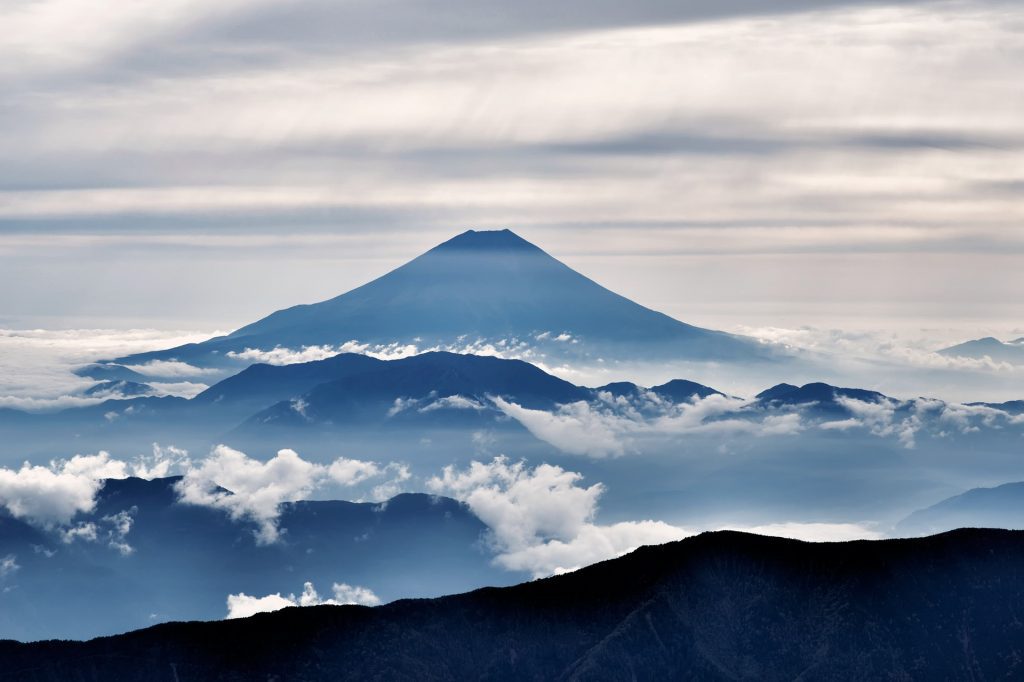Japanese Holdouts or Stragglers are Japanese soldiers who didn’t surrender after World War Two ended, and kept fighting, guarding, or hiding. Some fought for the honour of Japan, and some simply couldn’t bring themselves to commit suicide. Although Japan officially stopped fighting the US in 1945, in a way the US was still fighting with Japan until the last of these Japanese holdouts was caught in 1974.
Hiroo Onoda

Hiroo was an intelligence officer sent to Lubang Island. Unlike other soldiers, he was ordered not only to never surrender, but also to never take his own life. This meant he had no choice but to keep fighting no matter what. However, upon reaching the island, soldiers who outranked him didn’t allow him to perform his mission. Not long after the island was invaded, the only Japanese soldiers left fighting were Onoda and three other soldiers. They lived in the mountain for three years, and the way the outside world tried to communicate with them is fascinating. After shooting a cow, they found a message attached to it, informing them the war had ended.
They decided it was likely just propaganda, and ignored it. Leaflet after leaflet was dropped in the area, trying to convince them that the war was over, but they never believed it. Family photos, and letters were dropped as well, but they simply couldn’t believe the war was over. Eventually Onoda’s friends, both died in shoot-outs with locals and he was the only one left. A young Japanese hippie was on an adventure seeking to find Onoda, a panda, and the abominable snowman, in that order specifically. After four days of searching he found Onoda. After chatting and taking pictures of the two together, he returned to Japan. He found Onoda’s superior officer, who was now a bookseller, and asked him to come and tell Onoda he could come home.
Shoichi Yokoi

In 1972, deep in the Jungles of Guam, American Soldiers stumbled upon a Japanese soldier, who had remained hidden for the last 28 years. In 1944 when they lost the Battle of Guam, he and 9 other holdouts went into hiding. Most of them moved away until three were left living in the jungle. Two of them died, leaving Yokoi alone for the next 8 years. When it got dark, he would sneak out of his cave, and hunt for food. He made clothes out of plants, and lived off the land.
Eventually he was discovered by a man named Jesus, and his friend Manuel De Gracia, they were both checking their shrimp traps. Yokoi didn’t survive that long by being naïve, and attacked them, worrying they may be a threat. The two men managed to subdue him, and brought him out of the jungle and into the modern world. “It is with much embarrassment that I return alive,” his words upon returning to Japan, became famous. When he got back to Japan he became a television personality, and got married.
Sakae Oba

Oba was trapped on an island, occupied by U.S. forces, the only thing on his mind was to fight to the death. He kept fighting against the vastly superior American force, and wouldn’t stop until death. 90% of his fellow soldiers had died in the Battle of Saipan, and there was zero chance of victory. After the battle, he led a group of men deep into the jungle, and they survived for over a year under his leadership. Even after Japan surrendered, he kept fighting, since he was unaware the war had even ended. Eventually a Japanese general came to the island, three months after the war. He convinced Oba that the war had really ended, and Oba agreed to surrender. After surrendering, he became a successful businessman, and worked on the city council of Gamagori Aichi.
Yamakage Kufuku

He fought for four whole years after the war ended, on Iwo Jima island. Him and only one other soldier (Matsudo Linsoki) lived in a cave not too far from an American base. For four years they would sneak into the camp to steal food and supplies in order to sustain themselves, it’s likely they also utilised foraging and hunting. When American soldiers finally found their cave, they also discovered the majority of the canned ham they were supposed to have for Christmas, a year ago, and many other items which had gone missing from camp. They were the last of 3000 Japanese soldiers who were hiding in caves, and jungles.
Masashi Ito And Bunzo Minagawa

After surviving the Battle of Guam, Ito and Minagawa fled deep into the Jungle. They stayed in the jungle for 16 years, until 1960, when the two of them were finally found and captured. There were also leaflets dropped around the area, in the hopes any stragglers would see it and join the modern world. They also believed it to be western propaganda made to trick them. They lived off of bugs and roots. At night they slept on the muddy ground, with the heavy, pounding raining hitting their bodies, with nothing to cover them.
Noboru Kinoshita

Kinoshita was aboard a Japanese sea vessel, when the ship was destroyed by American planes. He jumped off the sinking ship, and swam to shore. After hours of intense swimming, not knowing whether he would even survive, he reached the shore of Samar Island. He began fighting with the Americans on the ground, but was forced to escape into the Luzon jungle. In the jungle he survived off of frogs, fruits and monkeys. In 1955 he was finally captured, and felt shamed beyond belief at being caught. He was so distraught he asked the guards to kill him, and when they refused he hanged himself.
Ei Yamaguchi

While patrolling Peleliu island, marines suddenly saw a hand grenade land in front of them, followed by more. 33 Japanese holdouts were still fighting on the island, led by Ei Yamaguchi. There were only 150 marines of the island, and 33 holdouts using guerrilla tactics could cause a lot of damage. They called for reinforcements to help find the Japanese holdouts. Underneath the island was an extensive system of tunnels, inside were the stragglers determined to win the battle for the glory of Japan. One of the holdouts was eventually caught, and revealed that the holdouts had no idea the war was over, and were planning a banzai attack on the base. The Marines quickly arranged for the families of the soldiers to send letters to them, and for a Japanese admiral to inform them the war had ended.
Teruo Nakamura
Teruo Nakamura was the last known holdout to surrender, but there may be more out there. Hiding in jungles, waiting to fight. He was stationed on an island in Indonesia, which was overrun in the Battle of Morotai. He survived, and lived on the island with other stragglers, until the late 50’s. In 1956 he left them and decided to make his own camp, which wasn’t discovered until 1974. After being discovered he retired, and left for his home country of Japan. Due to a strange law, he was only offered the equivalent of about grand in today’s money as his pension, which caused some outcry considering his dedication to duty.










